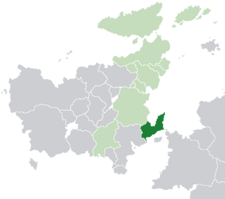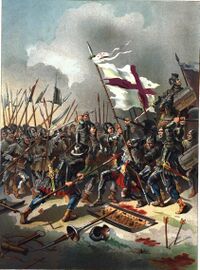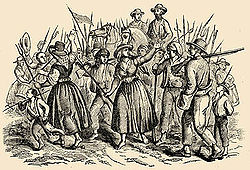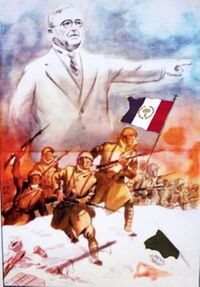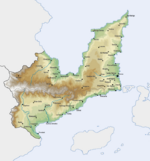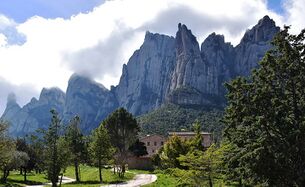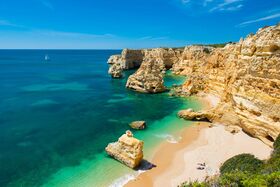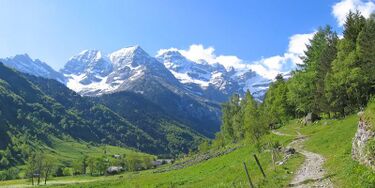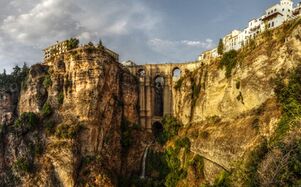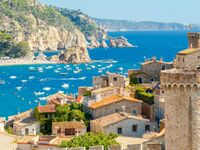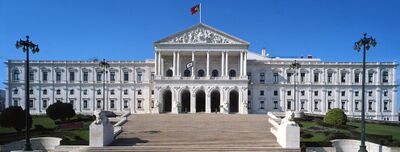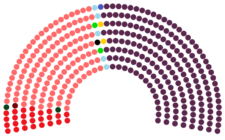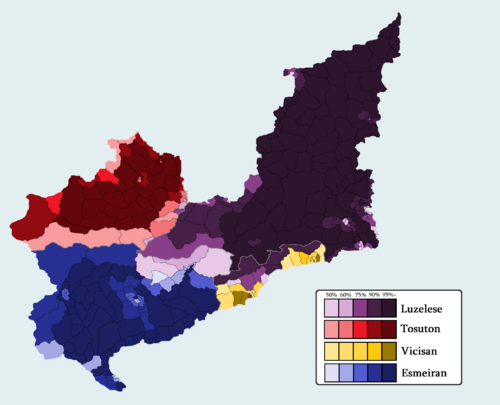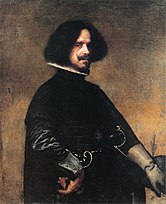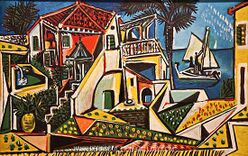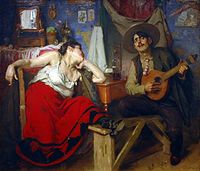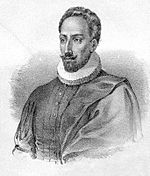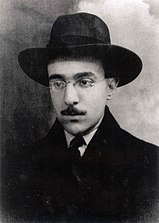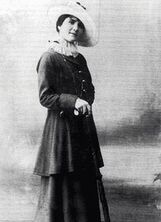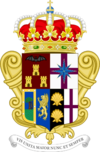Paretia: Difference between revisions
No edit summary |
|||
| Line 59: | Line 59: | ||
|government_type = {{wp|Federation|Federal}} {{wp|Parliamentary System|Parliamentary}} {{wp|Constitutional Monarchy|Constitutional Monarchy}}<br> | |government_type = {{wp|Federation|Federal}} {{wp|Parliamentary System|Parliamentary}} {{wp|Constitutional Monarchy|Constitutional Monarchy}}<br> | ||
|leader_title1 = [[Monarch of Paretia|King]] | |leader_title1 = [[Monarch of Paretia|King]] | ||
|leader_name1 = [[ | |leader_name1 = [[Manuel III]] | ||
|leader_title2 = [[Premier of Paretia|Premier]] | |leader_title2 = [[Premier of Paretia|Premier]] | ||
|leader_name2 = [[Isilda Cerqueira]] | |leader_name2 = [[Isilda Cerqueira]] | ||
| Line 142: | Line 142: | ||
In 1913, the Great Collapse would destroy the economy and the government was extremely unpopular, political leader [[Xulio Sousa]] would be elected Premier in 1925 and began to implement popular liberal policies to help the economy, however the pro-entente pro-functionalist monarchy ruled by [[Roberta II]] would allow and support a takeover by the functionalists known as the New Nation of Paretia Party, or Palmeirists, led by [[Carlos Palmeira]]. Sousa would be sent to exile to Etruria and begin a separate government, supporters of Sousa would begin rebellions and resistance in Paretia. The Great War began with the Novanists allying with [[Gaullica]]. Eventually the [[Grand Alliance]] and the pro-Sousa rebels would defeat the [[Entente]] and the [[Republic of Paretia]] would be founded by Sousa, however he would die of age shortly after and his successors would be unable to rebuild the country. The [[Etrurian Revolutionary Republic]] would conquer Paretia in the [[Solarian War]]. The [[CN]] would eventually liberate the country. The instability and separatism after this war would lead to a [[1946 Paretian referendum]] by pro-monarchists in 1946. The monarchy and the United Kingdom was restored by this. In 1970 another military [[1970 Paretian coup attempt|coup]] would attempt to overthrow the government, it would fail to succeed. | In 1913, the Great Collapse would destroy the economy and the government was extremely unpopular, political leader [[Xulio Sousa]] would be elected Premier in 1925 and began to implement popular liberal policies to help the economy, however the pro-entente pro-functionalist monarchy ruled by [[Roberta II]] would allow and support a takeover by the functionalists known as the New Nation of Paretia Party, or Palmeirists, led by [[Carlos Palmeira]]. Sousa would be sent to exile to Etruria and begin a separate government, supporters of Sousa would begin rebellions and resistance in Paretia. The Great War began with the Novanists allying with [[Gaullica]]. Eventually the [[Grand Alliance]] and the pro-Sousa rebels would defeat the [[Entente]] and the [[Republic of Paretia]] would be founded by Sousa, however he would die of age shortly after and his successors would be unable to rebuild the country. The [[Etrurian Revolutionary Republic]] would conquer Paretia in the [[Solarian War]]. The [[CN]] would eventually liberate the country. The instability and separatism after this war would lead to a [[1946 Paretian referendum]] by pro-monarchists in 1946. The monarchy and the United Kingdom was restored by this. In 1970 another military [[1970 Paretian coup attempt|coup]] would attempt to overthrow the government, it would fail to succeed. | ||
Paretia would join the [[Euclean Community]] alongside [[Amathia]] in 1995. Today the country is ruled by King [[ | Paretia would join the [[Euclean Community]] alongside [[Amathia]] in 1995. Today the country is ruled by King [[Manuel III]] and the government is lead by [[Isilda Cerqueira]], who is the head of the right-wing populist [[O Povo]] alliance in the [[Assembleia Nacional]]. Paretia is currently member of the [[Community of Nations|CN]], [[International Council for Democracy|ICD]], the [[Euclean Community|EC]], the [[Aurean Forum]], and the [[Association of Solarian Nations]]. | ||
==Etymology== | ==Etymology== | ||
Revision as of 23:49, 26 April 2023
This article is incomplete because it is pending further input from participants, or it is a work-in-progress by one author. Please comment on this article's talk page to share your input, comments and questions. Note: To contribute to this article, you may need to seek help from the author(s) of this page. |
United Kingdom of Paretia | |
|---|---|
| Motto: Vis Unita Maior Nunc et Semper "United we are Greater, Now and Forever" | |
| Anthem: Juntos, Marcharemos! "Together, We Shall March!" | |
| Royal Coat of Arms | |
Paretia in Euclea(Green) and the Euclean Community(Light Green). | |
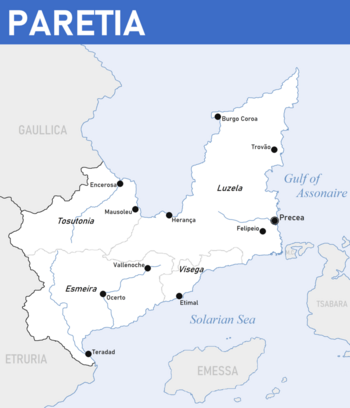 | |
| Capital and Largest City | |
| Official languages | Luzelese Esmeiran Visegan Tosuton |
| Religion | Official religion: Solarian Catholic Sotirianity Minority faiths: Amendist Sotirianity, Episemialist Sotirianity, Irfan, Ashram, Atudism |
| Demonym(s) | Paretian |
| Government | Federal Parliamentary Constitutional Monarchy |
• King | Manuel III |
• Premier | Isilda Cerqueira |
| Selena Caprichoso Horácio Pacau | |
| Isabela Saldanha | |
| Bruno Jussim Esteves | |
| Legislature | Senado da Paretia |
| Câmara Conselho | |
| Câmara Deputada | |
| Establishment | |
| 20 July 1541 | |
| Area | |
• Total | 240,886 km2 (93,007 sq mi) |
• Water (%) | 7.02 |
| Population | |
• 2016 census | |
| GDP (PPP) | 2020 estimate |
• Total | |
• Per capita | $26,345.11 |
| GDP (nominal) | 2020 estimate |
• Total | |
• Per capita | $23,715.79 |
| Gini (2020) | 28.9 low |
| HDI (2020) | 0.855 very high |
| Currency | Euclo (EUC (€)) |
| Date format | dd.mm.yyyy |
| Driving side | right |
| Calling code | +109 |
| Internet TLD | .pa |
Paretia (Luzelese: Paretia), officially the United Kingdom of Paretia (Luzelese: Reino Unido da Paretia; Esmeiran: Reino Unido de Paretia; Visegan: Reino Unido de Paretia; Tosuton: Regne Unit de Paretia), or the United Kingdom, is a Federal Parliamentary Constitutional Monarchy situated in eastern Euclea, located on the Paretian Peninsula. It is shares land borders with two nations, the northwest by Gaullica, and to the southwest by Etruria. It also shares maritime borders with three other nations, to the east by Montecara and Tsabara, and to the southeast by Emessa. Paretia has a population of 31.2 Million people. The Country is a union of four kingdoms, Esmeira, Tosutonia, Visega, and Luzela, the latter being the largest and most powerful kingdom of the four. Each of these kingdoms speak a separate language and have different, but still closely intertwined cultures.
The location of Paretia on the western side of Aurean Straits has made it a place of significance throughout much of human history. For much of its earliest history, the peninsula was inhabited by Tenic cultures, the largest was known as the Eastrian culture. By the 7th century BC, the Piraeans had begun to set up colonial cities across the peninsula. These cities would eventually grow due to the trade that was constantly going through the region. Soon the Solarian Empire would conquer the peninsula, and the empire saw Paretia with high importance and began to invest heavily into the region. Cities were founded by the empire, the largest being Preceus, which today is the capitol, Precea. After the fall of the Empire, its successor, the Verliquoian Empire, would take over the peninsula. During this era the Tagamic Invasions from Coius would land on the peninsula and Paretia became the focal point of the conflicts. These armies would sack and destroy many cities in the peninsula. Eventually the horde was defeated but the Verliquoian hold on the peninsula was severely weakened. Various kingdoms and principalities would form across the peninsula, these kingdoms each had different unique languages such as Luzelese, Esmeiran, Tosuton, and Visegan. The most notable of these kingdoms was Luzela, located on the eastern half of the peninsula.
By the 1400's Luzela had made itself far richer and more powerful than its neighbors. In the early 16th century, the Queen of Luzela Marta I, would lead her armies to conquer the peninsula and install puppet kingdoms ruled by the same royal house as Luzela, House Azulejeiras. Marta I would proclaim a United Paretian Empire or the United Kingdom of Paretia. The various Kingdoms would begin to colonize in Asteria Superior and Asteria Inferior, these colonies would be ruled by the separate kingdoms and had different official languages. In 1688 King Marcellus II would establish the first parliament, it however was made up of unelected nobles and businessmen. In the 18th century many all of the colonies would gain independence. An era of violence and revolution against the monarchy occurs in the early 19th century. In 1821, Xavier II would create a constitution with revolutionary leaders.
In 1913, the Great Collapse would destroy the economy and the government was extremely unpopular, political leader Xulio Sousa would be elected Premier in 1925 and began to implement popular liberal policies to help the economy, however the pro-entente pro-functionalist monarchy ruled by Roberta II would allow and support a takeover by the functionalists known as the New Nation of Paretia Party, or Palmeirists, led by Carlos Palmeira. Sousa would be sent to exile to Etruria and begin a separate government, supporters of Sousa would begin rebellions and resistance in Paretia. The Great War began with the Novanists allying with Gaullica. Eventually the Grand Alliance and the pro-Sousa rebels would defeat the Entente and the Republic of Paretia would be founded by Sousa, however he would die of age shortly after and his successors would be unable to rebuild the country. The Etrurian Revolutionary Republic would conquer Paretia in the Solarian War. The CN would eventually liberate the country. The instability and separatism after this war would lead to a 1946 Paretian referendum by pro-monarchists in 1946. The monarchy and the United Kingdom was restored by this. In 1970 another military coup would attempt to overthrow the government, it would fail to succeed.
Paretia would join the Euclean Community alongside Amathia in 1995. Today the country is ruled by King Manuel III and the government is lead by Isilda Cerqueira, who is the head of the right-wing populist O Povo alliance in the Assembleia Nacional. Paretia is currently member of the CN, ICD, the EC, the Aurean Forum, and the Association of Solarian Nations.
Etymology
The word "Paretia" comes from the word Parietem, the Solarian word for "Wall". The Solarians named the peninsula when they conquered it. The name derives from the original Piraean name for the peninsula, Empodio, which meant wall in Piraean. The name comes from the idea that the peninsula was a wall that divided the northern oceans to the southern oceans of Euclea. Most Solarian documents and maps labelled the peninsula as either Parietia or Parietium. Other names for the region include West Aurea and Great Luzela.
History
Prehistory
Antiquity
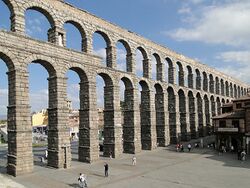
- Tenic and Paretian cultures
- Piraean and Nimene Colonies
- Solarian Empire
Middle Ages
- Verliquoian Rule
- Tagamic Invasions
- Kingdoms in Paretia form
- Rise of Luzela and Esmeira
Renaissance and Unification
At the Beginning of the renaissance period, art and culture began to explode from the Etrurian city-states and had spread its influence into the peninsula. During the time, many prominent painters and other artists began to make their works in Paretia, including Esmeiran Juan Albuquerquez and Luzelese Marco De Gama, both influenced by their Etrurian neighbors.
After the discovery of the Asterias by Assim Asteris in 1488, the Luzelese crown began to commission explorers expeditions to colonize on behalf of Luzela. Shortly followed by expeditions by the Esmeirans. They sent explorers such as Andres de Marchena and Duarte Bórgia, these countries would colonize what are today Marchenia, Picasia, Ardesia, and Belmonte. These colonies would begin to grow in size many from Luzela and Esmeira would immigrate to these colonies, the wealth of the Paretian kingdoms would begin to explode during this period.
In 1519, Queen Marta I would inherit the throne of Luzela. Marta's family, the House of Azulejeiras, was a very rich and influencial family with that was heavily supported by the people. At the time the peninsula was divided multiple states, the two largest were Luzela and Esmeira. The Tosutons however were divided in a lose confederation of Principalities. During this period Marta I sought to make Luzela a greater power as they had become rich from their colonies. They also were the most populous and wielded the largest naval armada of the Paretian kingdoms.
By the early 16th century, one of the regions of the peninsula would become a center of conflict between Luzela and the Tosutons, this region was known as the Mausoterra, located between Luzela and Tosutonia it was inhabited originally by mostly Tosutons, but Luzelese peoples moved westward and they would begin to fight over control of the region, many small kingdoms and princedoms would form in this region ruled by both peoples. Luzela at this time was only one of a few Luzelese kingdoms. These other kingdoms were separate and wanted to stay independent. Marta I would use spread the influence of the House of Azulejeiras into these kingdoms and install her family as their rulers. Her family rule new kingdoms, and even would rule the non-Luzelese Kingdom of Visega. Marta I's justification for taking over these kingdoms was to unite the Luzelese from the Tosuton threats in the Mausoterra.
By 1528 Marta I had a bigger agenda, which was to conquer the peninsula by using these client states ruled by the House of Azulejeiras, they would ally together in this war. In March 1528 she would invade the Kingdom of Casiovio. This would be followed by the invasions of all the neighboring kingdoms of Luzela, such as Esmeira and Tosutonia. This would be the beginning of what is known as the Paretian War. Esmeira and Tosutonia would form an alliance against Luzela. Marta I would raise a large army and navy to at the beginning of the war and first invaded Mausoterra and the small Luzelese states. Her armies would conquer these kingdoms swiftly by 1529, but she would set her sights on Esmeira, she would first attempt to capture the city of Vallenoche, which ended up being a massive loss for her armies.

The conflict also began in the colonies as Luzelese forces in Belmonte would invade Picasia. Luzela's naval armada proved to be more powerful as they would defeat the Esmeiran fleet off the coast of Belmonte and in the Solarian Sea. In 1532, Picasia would fall as they were in a supply shortage due to a Luzelese blockade. In Luzela, Marta I's younger siblings, Infante Cássio of Herança and Infanta Alba, would prove themselves as successful military strategists and even better soldiers. Infanta Alba would be given the nickname "The Bloody Princess" by many in eastern Euclea. In 1533, Esmeira would attempt to invade Visega, one of Luzela's allies, and would be crushed at the Battle of Pico Chairo. The battle would lead to a massive retreat by the Esmeiran forces and the fall of the city of Vallenoche. Up north, the Tosuton forces were holding out. In 1535 Luzelese forces would begin to besiege the capitol of Esmeira, Ocerto, which would last for 8 months, until the city fell.
By mid 1536 Luzela had conquered most of Esmeira and their colonial possessions, New Esmeira would surrender to Luzela in September 1536. In November 1536, Esmeira, Tosutonia, and their allies would unite their armies and attack the Luzelese city of Herança in the Mausoterra. Marta I had realized their forces were outnumberred and could not reach the city in time, she instead would continue her invasion into Esmeira. She then would have her armies march across the Eastern Aventines into Tosutonia in Winter, and in January 1537 would send a message to the Esmeiran and Tosuton armies. The message said that they the armies of Luzela would burn down the cities of Tosutonia and rampage across the land while they are busy attacking Herança. The Esmeirans and Tosutonians would then send their armies back home and meet the Luzelese at the plains of Acaton, located in eastern Tosutonia, the Esmeiran and Tosuton armies were weary and tired as they had rushed back to Tosutonia with haste. The Luzelese forces would destroy their armies swiftly at the Battle of Acaton, which saw the fall of the kingdoms of Tosutonia and Esmeira and the Peninsula of Paretia conquered by Luzela.
For the next four years, Queen Marta I would rule Luzela as one kingdom that ruled the peninsula and would integrate the colonies into the kingdom. In order to keep unrest from occuring, in 1439 Marta would make the colonies separate entities that spoke their separate languages of Esmeiran and Luzelese. However the language of the government business between the colonies would be Luzelese. Marta would use this system between the colonies as a way to begin setting up the governemnt in Euclea. From 1538 to 1541, Marta I would install puppet monarchies in the conquered kingdoms, all from the House of Azulejeiras. Many of these monarchs were siblings, cousins, and children of Queen Marta I. During this period, the kingdom would grow in wealth even more now with control of the resource-rich lands in Esmeira and Tosutonia, however Marta I saw the faster growth and strength of other, unified, Euclean nations. She decided to unify the peninsula under one state that would rule all four of the kingdoms, on July 20th, 1541 Marta I would declare The United Paretian Empire, which is today the United Kingdom of Paretia.
Early Modern
After the death of Marta I in 1552 the country was unsure on who should succeed her. Her son, Pio I, did not return to Precea to be coronated and was missing. Marta's will gave the throne to her younger brother Cássio of Herança. His sister, Alba of Precea, also sought the throne. A short civil conflict occured between forces loyal to each of the siblings, Alba's forces were able to win and Cássio was killed after only two months in power. Alba's ruled lasted only two years until the return of her nephew Pio I and her overthrownment by forces loyal to him.
Paretia fought in the Amendist Wars in support of the Catholic League, the Paretian forces would send over 20,000 troops to fight in the war. Later Paretia's colonial status grew immensely, the Luzelese colonists would become as bandeirantes, explorers who were send to explore and take land from the natives, particularly in Belmonte. The government expanded colonial growth in the Asterias in places like Belmonte.
The Paretians would come into conflict with Povelia and their colonial ambitions, they would proceed to fight a short war with the Paretians known as the Luzelese-Povelian War. The Paretian forces would lose the war and their colonial possessions of Belmonte to the Povelians. The Paretians began a policy of discrimination towards Vespasians, who the Paretians considered to be their central colonial and geopolitical rival.
During this period there were numerous rebellions amongst the Tosuton and Esmeiran areas, the largest of these was the Vallverdú-Escolano Rebellion in 1656, which was crushed by the Luzelese monarchy. The monarchy of Marcellus II in the late 17th century would create a lot of reforms. In 1688 Marcellus II would create the first Paretian legislature, the Cortes Gerais, that represented lords and nobles from all of Paretia, including the Tosuton, Visegan, and Esmeirans. Marcellus II was succeeded by his son Tiago II, who would greatly give power back to the monarchy and reversed the attempted reforms made by his father.
Tiago II's successor Henrique III would become a pivotal monarch, he would get rid of the royal puppet monarchs that ruled over Esmeira, Tosutonia, and Visega. This would consolidate all of Paretia's power back to the Luzelese monarchy and Cortes Gerais.
In the early rule of Henrique he closely made a friendship with the Gaullican throne. He would attempt to form a formal alliance with the northern neighbor but the attempt would fail to come to fruition. In 1711 the Ten Years' War broke out between Soravia and the Rudolphine Confederation, the war would drag other countries such as the Valduvians, Vespasians, and Estmerish into the conflict. The war continued for seven years until Soravian sent it's chancellor, Count Loskutov-Savin, to Gaullica and Paretia. This would lead to the entrance of Gaullica and Paretia on the side of Soravia in the war, promises of colonial possessions from the Povelians was enticing to the Paretians, who wanted to get back Belmonte. Paretia send thousands of soldiers into the war in both Euclea and the Asterias. The Paretian forces located in their Asteria Superior territories, known as the Paretian Royal Asterian Corps, was made up of Paretian colonists in the region, they would be sent to fight the Povelians in their colony of New Povelia. Their forces would push back the Povelians across the western regions of New Povelia, whilst in the east Soravian forces in modern day Vinalia would push them back. Gaullican and Paretian naval forces aided the Soravians and eventually the Vespasians, Estmerish, and allies were defeated by their combined forces.
The war was ended with the Congress of Cislania, however Henrique III and the Paretians did not agree with the treaty, as they did not get the territories they wanted. They would refuse to accept the Congress for the time being. Despite taking New Povelia from the Povelians, they wanted the take back the Luzelese-speaking colony of Belmonte from the Povelians as well, this colony was awarded to the Gaullican Empire instead. This would lead to conflict with the former ally of Gaullica, Paretia's military confidence and morale was massive after their victories in New Povelia during the war. This eventually lead to the short Gaullico-Paretian War. Despite their newfound military power, the Paretian forces were unable to match the Gaullicans, They would fail to take back Belmonte from the Gaullicans and were defeated in Asteria Superior as well. After one year of fighting they gave up and accepted the Congress of Cislania, and were also forced to give up their territories in Asteria Superior to the Gaullicans, only keeping control of the newly conquered New Povelia.
Paretia lost lots of colonial power very quickly and the monarchy of Henrique III became very unpopular. The Luzelese monarch eventually died in 1735 without a child, or heir. This lead to the rise of the noble family of the House of Sagreira, which has massive influence in the Cortes Gerais and was very rich. This family was lead by Marquis Duarte de Burgo Coroa, who became the new monarch with support of the Cortes Gerais. He would become king Duarte and would attempt to rebuild Paretia after following two consecutive wars.
The rule of Duarte would be very peaceful for the first years of it, but eventually economic problems stemming from the wars would hurt his popularity. He was succeeded by his son Rafael I in 1745, this began to lead to the future revolutionary conflict in the country. Rafael I was fairly unpopular, he would ignore much of the will of the Cortes Gerais during his tenure. In 1768 a earthquake in Luzela would destroy the royal palace, Cortes Gerais palace, and much of Precea. The effects of this event hurt Paretia economically as much of the city's harbor was destroyed by the earthquake as well as much of it's merchant fleet.
The Pronunciamento
In 1771, King Rafael II would ascend to the throne after the death of his father Rafael I. Under Rafael II the country saw an explosive rise in poverty across the country, particularly in the cities. Rafael and his family, known as the House of Sagriera, were particularly unpopular amongst the populace due to their life in a lavish palace life style in the outskirts of Precea in the suburb of Jardinagem. In June of 1782 Rafael II would call off his advisors and representatives, known as the Cortes de Paretia, leading to outrage amongst the middle class of Paretia. The rise of the Etrurian First Republic lead to revolutionary sentiment across Euclea, including Paretia, the events in Etruria and Rayenne inspired a group of revolutionaries known as the Pronuncist Movement, lead by Leandro Tavares, met in Burgo Coroa in 1792 and created their movement. Its ideology was based upon revolutionaries in Werania and promoted militarism, meritocracy, and rationalism. Their ideology was much more radical than other revolutionary groups, but they became far more popular. Protests began to occur across Paretia for a revolution, which frightened Rafael II greatly. Invasion by the Republic of Heaven caused more chaos, Paretia's army were driven back, and a puppet republic was formed, however the Pronuncistas were against the theo-republican state of Etruria and formed militias to defend the country.
The anti-government movement would increase greatly upon the return of Tiago IV, a descendant of the House of Azulejeiras and heir to the throne. In 1806, he used the revolutionary movement to claim the throne for himself and promised to work with the revolutionaries on forming a constitution. The country at the time was in shambles and many wanted Tiago to take over due to the conditions of the country. In 1809 the Massacre at Esodos would see hundreds of peasant revolutionaries killed by the royal guard. This would lead to revolution lead by the Pronuncistas and Tiago IV, it was greatly supported by the public and military, the radical groups began to use violence against Rafael II. The loss of colonial lands in the Ardesian War of Independence caused more dissatisfaction from the people. In 1810 the Pronuncistas and pro-Azulejeiras military forces would attack Montoya Palace in Esmeira, where Rafael II was in hiding, he would be killed.

Afterwards Tiago's attempts would continue to fall flat of the demands of the radicals in the Pronuncistas, who began to threaten him as well, with Pronuncista leader Leandro Tavares proclaiming that they would rid the monarchy if this royal family fails them. In July of 1811 Tiago IV would reject the constitution of the revolutionaries on claims that it is too radical for him to accept, his faction split off into the Revolutionary Pronuncists, the moderates became the New Pronuncists. The radical sect would in August commit the Regicide of 1815, which they would attack a wagon carrying the two eldest sons of Tiago IV and murder them. This would lead to Tiago IV completely rejecting any negotiations until his death in 1816. His son, Xavier II was more open and supportive of resolving the conflict, but still would not support anything that in his mind was too radical. He continues to negotiate with the New Pronuncists and his advisory council for years and would not be able to make any consessions with the Revolutionary Pronuncists, and in 1917 outright rejected them like his father. The response was many attacks on the government, including bombings, assassinations, arson, and vandalism against the government, and on the 7th of June 1818 would commit the Regicide of 1818, which was larger and in scale and under complete support by Tavares and the Revolutionary Pronuncist leadership, who would coordinate the killings of all of Xavier's children, except for one, ands all of his royal relatives to make sure no one ascends the throne. From 1818-1821, he would meet with moderate Revolutionary Pronuncists, New Pronuncists, and other intellectual leaders and revolutionaries to create a constitution and on the 19 September 1821 he and his associates would ratify the Constitution of The United Kingdom of Paretia.
Though a constitution was established, he was still seen as an enemy by many revolutionaries and there would still be unrest in the following years. New Pronuncists leader Silvio Lourenço became the first Premier of Paretia. Tavares and many Revolutionary Pronuncists would be captured and arrested by the government in 1822, the movement would still conduct revolutionary resistance for the next decade. In 1833 Xavier II and his wife Roberta would die in a ship wreck off the coast of Luzela. Due to the Regicide of 1818, the monarchy was in jeopardy and the revolutionaries saw opportunity. However the Paretian statesman noble João III of the House of Pavillon would claim the throne of Paretia and put down any revolutionary threat by 1835.
First Constitutional Era
For João III, he would keep the constitution, the country was greatly united under it and removing it would likely result is revolution. Under his rule Paretia began to rebuild from the turmoil of the revolutionary conflict. During this era the New Pronuncists split into the Moderate Party and Republican Reformists, lead by Silvio Lourenço and Josué Sapateiro respectively. He was succeeded by Roberta I, her rule continued the policies of her uncle. Later politicals divided into the conservative Traditionalists and progressive Progressive-Liberals. Roberta I was succeeded by her brother Xavier III, he would also begin to industrialize the economic as technology had begun to advance greater than ever, focusing on the military and industry.

The two major parties dominated over the next few decades switching from power every so often, except for two occasions, when Premier Sandinho Abreu became politically independent and preferred a military oriented rule, and when the Radicals of Paretia party took over under Tristão Magalhães. After Magalhães, the two dominant parties became threatened, and began to support eachother. However, economic downturns under Premier Ambrósio Aguiar and subsequent Premiers and other events such as the San Sepulchro Revolution in Etruria lead to anger amongst the people.
Xavier III was succeeded by his son Lourenço III, whos first move was to begin to build the public and economic infrastructure of Paretia, however early on disagreements between the monarchy and government began to occur. Many new parties began to form during the late 19th century, such as the socialist Paretian Leftist Union and populist Liberal National Resurrection Movement, the latter became very popular towards the end of the century. Túlio Serras, the leader of the LNRM, was elected Premier in 1894 in a landslide win, he began to promote much of Lourenço III's plans to industrialize Paretia and strengthen it. The start of the short period known as the Turno Tranquilo would occur during their rule. He would become the longest serving Premier in the nations history, serving up until his death in 1911. He was succeeded by his Deputy Joaquim Capela, who eventually lost to the rising National Conservative Party in 1912.
Paretia was amongst the hardest hit by the Great Collapse of 1913, it would lead to economic downturn for much of the nation. Unemployment in Paretia in 1917 reached as high as 27.7%, leaving many entering poverty, the government would greatly expand welfare in the followiung years. Political unrest began to grow and new parties began to grow immensely in the world, as well as global tensions. Some parties such as the functionalist New Nation of Paretia Party, the Anarchist Revolution - Paretian Republican Syndicalism movement, and Paretian Section of the Workers' International began to gain appeal.
In 1921 Lourenço III was succeeded by his daughter Roberta II. In 1921 the PNNP, lead by Carlos Palmeira grew immensly and in the 1922 elections gained many seats. They would be joined by Roberta II, who became a fan of Palmeira and a devout functionalist. The PNNP would use intimidation and violence to gain foothold over other groups, Premier Duarte Bonifacio would not do much to stop their influence. The SPIT would engage in street brawls with the PNNP leading to fatalities. In opposition the Democratic Party of Paretia led by Xulio Sousa would also become popular among the rest of voters, and in the 1925 election would narrowly win against the PNNP. However the monarchy of Roberta II would deny to appoint Sousa to the position, she would eventually give in but Sousa's Premiership was swiftly taken down by a pro-PNNP coup lead by the military and the monarchy, and Palmeira would take over, beginning the functionalsit era of Paretia. He would swiftly ban political parties and executed opposition. Socialist and democratic resistance groups formed and began underground fighting against the government of Palmeira and Roberta II.
Functionalist era and Great War
Republic Period

After the Great War in Euclea ended in early 1935, the constitutional monarchy was deemed as a major part as to why the PNNP rose to power, and was replaced with a republic. The Republic's new government was a presidential republic. The position of President would replaced the position of Premier and the Monarch and function as both Head of State and Head of Government. The Assembleia Nacional still functioned in a similar way as before but now with a Vice-President added to it. The first elections were held in summer 1935, and Xulio Sousa and the now extremely popular Paretian Democratic Party would win in a landslide. During this time Sousa began to enact laws to rebuild the economy and kick out the far-right from Paretia.

The first signs of trouble in the Republic came with the sudden death of Sousa in January 1936. His VP Martinho Carreira would replace him, however, he would not live up to his predecessor's promises and the country's economic state was in continuous failure. As a former Entente nation, over the Great War also put a large burden on the economy, and many cities were unable to rebuild for years. Carreira's government would collapse in late 1936,. The PDP eventually split apart into the moderate left-wing Republican Worker's Alliance and moderate right-wing Rebuild Paretia Party. The next election would see the former win big and Ramiro Felipes come to power. Many of his policies would work at first, however unemployment rose to 23% and he ended up in a scandal where he was caught being bribed by large companies to not enact pro-union reforms.
The rise of the Greater Solarian Republic in the Legionary Reaction caused a fear of weakness in Paretia's leadership. He would eventually lose power in the 1939 election, which saw the rise of Enzo Queiroz Miranda and the Civic Patriotic Republican Pole. He promised to make sure Paretia was safe from nations such as Etruria, under the Protect the Country policies. He was considered a catch-all ideologically and many of his policies including increasing wages and expanding the military as a means of getting people back to work were able to help somewhat stabilize the economy. However he was a harsh anti-councilist, and arrested many far-left leaders which he saw as a threat that was just as much dangerous as the far-right.
Miranda's rule would last the longest of the Presidents of the Republic. He would become fairly popular during his later years in office, despite his authoritarian measures and crackdowns of the free press. He would make friends with foreign countries such as Gaullica and Piraea during this period, especially the latter. The Republic of Paretia and the newly formed Piraean Republic saw themselves as allies against the national-functionalist Etrurians. The Solarian War broke out 1943 between Piraea and Etruria. Miranda was enraged by the lack of action by the CN after the invasion of Piraea. Etruria soon followed by declaring war on Paretia and began a massive invasion of the country.
Solarian War
Late 20th Century

After the Solarian War the Republic's government returned to power after two years of exile, however displeasure with the Republic's government and continuous change in power lead to calls for a coup or referendum restore the monarchy. Then-President João Orvalho feared a coup and accepted a referendum. The referendum was held in November 1956 and succeeded and a with popular support transitionary military junta lead by General Augusto Gama-Castro would oversee the restoration of the monarchy, Prince Tiago V of the House of Azulejeiras would be instated as Monarch and a return to the constitutional monarchy was completed in August 1947 during the first election saw Martim Albuquerque and the Catholic Democratic Party take over. The old 1833 constitution was brought back but modernized to give less power to the monarch than before.
During the 1950s Paretia would begin to rebuild after suffering through the Great War and the Solarian War, Dário Varejão and the social democratic Labour Party of Paretia would take power iun 1953. In the 50s a group of separatist terror groups emerged in Paretia, including a Tosuton, Esmeiran, Tenorian, Deguitan and Visegan group. They committed car bombings in the 1950s and were left-wing in nature. The largest of these groups was the People's Army of Tosutonia, or the EPT. These attacks lead to the election of Leonel Freitas and the right-wing Popular Alliance. They allied with the Sotirian Democrats and the National Sotirian Force, a far-right neo-functionalist party that had close ties to the Etrurian NMR. Danilo Abril would take over in 1966 Corporatism would grow immensely in Paretia as they became close with the Euclean Community during the 60s, Paretia would serve as an ally to nations like Werania and Estmere in the Great Game, fighting against socialists in the Anniserian War. Far-right groups were embolded during this period, and began to fight leftist groups, these years are known as the Anos de Chumbo(Years of Lead). The government's response known as Operation Rainha in 1968 would greatly weaken the separatists. By the late 60s the EPT and other leftist groups were crushed by the governments of Freitas and Abril, although Freitas was assassinated in 1969 by an EPT carbomb.
In 1969 the AP's Caetano Ribeira da Vila took over as Premier, he continued to use the emergency powers of the UNP government to target opposition, his rule was greatly unpopular. In 1972 a failed far-right coup would lead to the collapse of the UNP after Ribeira da Vila attempted to blame the FNS for the coup.
The PTP's Eugênio Dantas took over in 1972, his term saw the rise of new parties including the UC and liberal Together for Liberty. Cabral and the UC would win in 1975, his rule saw, despite being somewhat moderate they were very opposed to joining the EC. In the 1980s the Together for Liberty party, lead by Manuela Morais would take over and begin a transition towards joining the EC but would lose the next election to the UC's Martí Solaries. During the 1980s the Social Democrats lead by Julío Pires, came to replace the Labour Party has the leading left-wing party of the country. Solaries was very unpopular as more and more Paretians were in favor of joining the EC. For the SD, they became extremely popular in the 1990s on the platform of social reform, labour politics, and joining the EC, gaining the largest majority in Paretian history.
In 1991 the government called a referendum to join the EC, it succeeded. By 1995 Paretia would join the Euclean Community alongside Amathia. The popularity of the Social Democrats and Pires would grow again gaining even more seats, and their policies would lead to labour reform, and liberalization of Paretia's politics. They also introduces new social welfare programs, namely a free healthcare program and free college tuition.
21th Century Paretia

The Social Democrats continued to have control for over a decade until the 2002 election, with the ND winning. In 2005 recession hit the Paretian economy, which lasted for nearly two full years in Paretia alone. Premier Marcelo Simões began to shift the ND towards the center in order to win stay in power for a little while longer. Marcelo Simões would have to work other parties such as Together for Liberty, Catholic Citizens, and various regional parties to lead a fragile coalition government of the center to right-wing.
A small political party known as the Progressive Paretian Party began to grow and would greatly help the SD. The SD would win the 2008 election and formed a government with the PPP, Felipe Pascoal began a massive progressive shift in Paretia, legalizing gay marriage, expanding on abortion, and relaxing immigration laws. However, despite being the largest party in the 2011 election, the UC and their center to right-wing allies united and formed a government under Vasco Gonçalves. The government of Gonçalves is often describe as "fragile" and "thinly united" as it saw little progress despite being in power for 9 years.

The ND however had been experiencing a divide in it's own party for a few years by this time, with the party shifting center and very pro-EC since the government of Simões. Dissatisfied members such as Selena Caprichoso and others split off to form the populist Patron League. Other populists began to grow, such as the Alternative Party, lead by Horácio Pacau. These parties and their rhetoric were centrally euclosceptic and anti-establishment. Some populists stayed in the ND for a little while longer, such as Isilda Cerqueira, a radio host and politician who was seen as the leader of the populist right in the country.
In 2020 the Tsabaran Civil War broke out, causing a refugee crisis that directly effected Paretia and the EC. Paretia would be supportive of the Tsabaran government in the war. By 2020 the populist right had gained massive control in the government, the LP and Alt Party became the third and fourth largest parties respectively and became major players of the ND-led coalition, but in the 2020 government formation, they would force the coalition leaders to have Cerqueira become the new Premier. Cerqueira's first year saw continuing split and fall of the moderate and liberal parties in the country. In 2021 Cerqueira would join the LP and called a snap election. The LP would be aided by the 2021 Trovão elections scandal and would defeat the resurging SD in the election, allying with the Alt Party to form the populist O Povo government. In 2022 O Povo united into a single party known as Popular Victory.
Geography
ly 240,886 km2 in size. It is located on the promenant Paretian Peninsula which extends from eastern Euclea. The country is located between the Florian and Lumine Oceans at the Aurean Straits, which separate the country narrowly from Tsabara and the Coius continent.
The Paretia coastline is rough and jagged in most places with rocky shores cliffs spanning its beaches. The inland regions are separated by towering mountains known as known as the Eastern Aventine Range and rolling hills in around the mountains, these ranges can be divided further into the Deguitan Range, the Luzelese Range, the Central Paretian Range, and the Tosuton Range. The nation's highest peak is Mount Avìle on the western border with Etruria, it reaches as high as 3,057 meters (10,032 ft). The longest river is the River Espiesa which flows from the northern border of Esmeira and Tosutonia and flows to its mouth at Teradad at the southern end of the country. The flat region in Esmeira is known as the Deguita Plain.
Much of the flatlines of the country are full of rolling hills with various crops and other agricultural fields located across them. Many valleys are located in the inland of the nations as well hidden between the mountains. Much of the country is covered in a golden like soil that is known for its tilth. The northern tip of the Paretian Peninsula is at a point known as Ponto Brilho, the eastern end of the peninsula next to Montecara is known as Cabo Continental.
The Viña River Valley, Esmeira
The Costa Do Ulisto, Luzela
The cliffside town of Relva Amarela, Luzela
Climate
The Paretian Climate is mostly a mediterranean climate that varies in different parts of the country. In the center of the country as the altitude grows, the climate becomes colder and more a apline climate. Regions like Esmeira in the southern end of the country have a very diverse climate, which ranges depending on how far inland it is, from a frigid tundra at the tops of the Eastern Aventines, to a Humid Sub-Tropical climate in the middle, and a warm mediterranean coast. In inland Luzela, the climate becomes dry and arid areas exist due to the Eastern Aventines blocking rain. Tosutonia has the coldest climate among the kingdoms with a somewhat temperate climate compared to the other kingdoms and the mountains in Tosutonia are the coldest region in the country.
The average temperature of a Paretian winter depends on the location within the country. In eastern Luzela, they are usually warmer winters and snow is uncommon on the coasts, while further inland and in Tosutonia, winters can be very cold and damp, along with a very common snowfall everyone winter. The summers on the coasts of Paretia are very humid and very warm, in some areas temperatures can reach as high as temperatures that are found in Rahelia. Inland the summers are more temperate but still warm. Paretia gets some of the most sunlight in Euclea and in some years has experienced droughts in regions like Luzela, Visega, and southern Esmeira.
The weather of Paretia usually has normal thunderstorms in warmer times and winter storms when it is cold. Paretia rarely experiences extreme blizzards during the winter months. The country can experience tropical storms during the summer months, although a powerful tropical cyclone is rare.
Biodiversity
Paretia is considered one of the most biodiverse nations in Euclea, with a range of climates in different parts of the country leaving many different species to be found in their various biomes habitats. According to the International Committee for Nature, there are known to be around 86,000 species residing in Paretia. There are many fauna located in Paretia, among these include the Paretian wolf, West Paretian chamois, Paretian ibex, Paretian worm lizard, Paretian pond turtle,and the Esodos hare. There are many species that are considered endangered due to hunting, including the Tenorian black bear, many are located on protected areas where hunting is illegal. Around 30% of species in Paretia are threatened. The national animal of Paretia is the bull.
There are many areas in Paretia with great biodiversity, including its long coastline, which hosts a variety of animals. Areas on the coastline of Paretia such as the Aurean Straits or the Gulf of Paretia, are known to be home to species such as Stripped dolphins, various species of whales, and sea turtles. Many coastal areas are also home to around six species of seals.
The flora of Paretia is also very diverse. There are many different types of species of plants depending on the area of the country. Paretia is home to the most vascular plants of any country in Euclea. Much of the dryer interior of the country is populated with sclerophyll, known for their harder structure, and semi-deciduous plants. These include holm oak, cork oak, and wild olive. Much of the inland shrubland, are known as Maquis shrubland. In higher altitudes there are plants like East Aventine oak, juniper, and scots pine. In more greener areas there are species like common oak or lime, and in coastal areas there are populations of palm trees.
Government and Politics
The government of Paretia is a Federal Parliamentary Constitutional Monarchy in which the Monarch is the Head of State and appoints a Premier to be the Head of government. The Constitution of The United Kingdom of Paretia, adopted by the country in 1821, is the document that sets up the rules, regulations, and framework of the government. The current Monarch of Paretia is King Manuel III, who has ruled since he was given the throne in 1980. The current heir apparent of the monarchy is his daughter, Princess Inês.
Government
The Legislature of Paretia is a set up in a bicameral system and is known as the Senado da Paretia. There are two legislative chambers, the lower chamber is known as the Câmara Deputada, and the upper chamber is known as the Câmara Conselho. The last chamber is the Coroa, which is where the monarch presides. In order for a bill to be made into law, it needs to pass a vote in both the Câmara Conselho and Câmara Deputada, and then get approval from the Coroa to which then it becomes law. The National Assembly Building is located in the center of Precea and it houses both legislative chambers.
The Head of Government of the country is the Premier. The Premier is appointed by the monarch after a vote of confidence in the Câmara Deputada. The Premier is either a leader of a party or the leader of a coalition that has control of most of the Senado da Paretia. The Premier controls the Government of Paretia and usually serves a term of 3 years in office, but the country does not have term limits on the office. The current Premier of Paretia is Isilda Cerqueira, she has been in office since 2020.
The Câmara Deputada has a total of 360 seats who represent electoral districts and are elected to each seat through a annual General Election or Snap Election. Each of the nations have a purportionate number of seats, Luzela having 161, Esmeira having 96, Tosutonia having 73 and Visega having 30. These elections are held every three years. The country has a multi-party system.
The Câmara Conselho is the upper house and has a total of 130 seats. Each of the representing the various kingdoms of the country. Each of the four nations have less seats are do not represent a district but instead are decided based on party vote count in the respective kingdoms, Luzela having 53, Esmeira with 32, Tosutonia with 25, and Visega with 10. They are elected through General Election or Snap Election which are held every three years. They use a multi-party system and the largest parties are the Social Democrats, and Popular Victory, the latter who lead the O Povo alliance. This chamber is also where the Premier and Monarch resides when called to the legislature for various meetings and deals.
Political parties
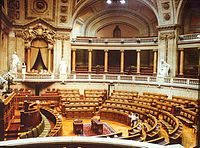 |
|
Government (62) Popular Victory(VP) (62) Opposition (56) Social Democrats (SD) (42) Paretian Section of the Workers' International (SPIO) (9) National Reform Party(PRN) (2) Greens (Vs) (1) Catholic Citizens(CC) (1) Democratic Alignment(AD) (1) Party for Luzelese Interests(PIL) (1) Luzelese Representation Party(RL) (1) |
Paretia has a multi-party system in its government. Since the creation of the parliamentary government in 1821, most politicians were independents until the 1910s when the councilists, democrats and functionalists arose. For most of contemporary history the largest parties in Paretia were the Social Democrats and New Democracy. After the return of the monarchy, the Senado da Paretia was reformed back into its pre-republic state. During the 50's the fear of socialists from Kirenia and the memory of fascist rule from Etruria led to a very neutral decade in Paretia. By the 60's the country was economically behind its other Euclean neighbors, and the debate of joining the newly established Euclean Community began. Up until the 70's the newly-established New Democracy was the most dominant party. By the late 80's the Social Democrats would be in power and finally get Paretia into the Euclean Community. Since the mid-2000's eucloscepticism has grown and lead to a growth in new parties that are more radical than of the older ones. Over time various political parties have come and gone, notable parties could include the far-right National Sotirian Force which existed in the middle 20th century, or the Progressive Party which existed from the 80's and dissolved in 2014.
Today the largest party is the Patron League. New Democracy and many other center and right leaning parties had formed a coalition known as the Compromise Coalition. This coalition had a total of 8 parties all together, the largest being the liberal conservative New Democracy, the right-wing populist Patron League, and the center-right Catholic Citizens. The coalition was founded in 2013 but has evolved in membership since, today the coalition is lead by the right-wing but politically independent populist Isilda Cerqueira, made as a compromise between the populists and the non-populist members of the coalition.
The Compromise Coalition was in a fragile state as a split between the populists and the older parties has led to little compromise between the two since 2020. One major divide between the coalition is that the older factions such as New Democracy or the Together for Liberty are pro-EC while the younger populists such as the Patron League or the Alternative Party are very anti-EC and Eucloskeptic. Since the 2020 Paretian Election, the productivity of the coalition had diminished greatly and the opposition parties were able to block much of the legislation that attempted to be passed. A poll from the end of 2020 showed the popularity among voters of the Conservatives or the CL was below 20% for their own parties whilst support for the Patron League or the Alternative Party were around 40%. In June 2021 Premier Cerqueira would join the Patron League, and a snap election would be called as the government coalition collapsed. A snap election followed which saw the LP winning and forming a government with the Alt Party. This government would be known as O Povo, and would see a drastic shift towards the far-right. The ND and JpL would unite into the centrist Democratic Alignment. In 2022 the Alt Party split apart and the right-wing side of the party united with the LP into a new united party, Popular Victory.
There are also regional parties that represent the citizens of the four kingdoms of Paretia. In Esmeira, there is the Esmeira Party. In Tosutonia there is the Tosuton Front. In Visega there is the Visegan Party, and in Luzela they have two, the Party for Luzelese Interests and the Luzelese Representation Party. Four regional parties were each created after the formation of the Senado da Paretia the only one of these parties that does not exist today is the Luzelese Party. The Luzelese split apart into two parties, the Party for Luzelese Interests focused on the interests of the Luzelese, whilst the Luzelese Party focused on expanding Luzelese interests is the Luzelese Representation Party and their ideology is centered around.
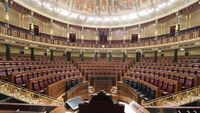 |
|
Government (191) Popular Victory(VP) (191) Opposition (169) Social Democrats (SD) (129) Paretian Section of the Workers' International (SPIO) (26) National Reform Party(PRN) (5) Greens (Vs) (2) Catholic Citizens(CC) (2) Democratic Alignment(AD) (2) The Tosuton Front (FT) (1) Esmeira Party (PE) (1) Visegan Party (PV) (1) |
Law and Judiciary
The Law of Paretia is a form of civil law which is based upon the system of Solarian Law. The national laws of the land are written in the Constitution of The United Kingdom of Paretia which has changed over time through dozens of amendments since its ratification in 1821. The highest court in the land is the High Court of Paretia located in the capitol, which is where hearings on the highest level such as on cases of final appeals to the court or constitutional court hearings. Each of the Kingdoms also have their own high courts as well as constitutions that lay our their regional laws, however their regional laws cannot outweigh the national law. There are also individual municipal and local level courts in the cities and towns of Paretia.
The law enforcement of Paretia is divided into federal level forces run by the Paretian government and the Kingdom level forces run by the four individual kingdoms. The largest police force in Paretia is the Federal Paretian Law Enforcement or Aplicação da Lei Federal Paretiana, run by the Paretian government and monarchy under the Ministry of Justice, it deals with most crimes in Paretia. There also is the Paretian Civil Guard, or the Guardia Civil Paretiana. which deals with more organized crime and federal crimes, as well as drug trafficking and terrorism . In the capitol of Precea, it is heavily patrolled by the Majesty's Central Guard, or the Guardia Central de Majestade, which was created by the monarchy in the 17th century and is the oldest serving law encforcement agency of Paretia, it is a volunteer grendamarie force with the duty to defend the government, monarchy and public of Paretia. The Federal Paretian Law Enforcement has over 100,000 law enforcement officers and is one of the largest police agencies in Euclea. Other federal agencies include the Paretian Prison Agency, the Paretian Border and Customs Agency, and the Paretian Maritime Police Agency. The national intelligence agency of Paretia is the Intelligence and Information Service.
Paretia on an international level has a fairly low crime rate statistically, however in comparison on a regional level in Euclea, it has one of the highest crimes rates. Especially in comparison in Eastern Euclea, it has the highest crime rate among the Euclean Community nations. Among specifically violent crimes, Paretia also ranks number one among the EC. A major factor of this can include the trafficking of illegal objects and substances from Coius into Euclea through the Aurean Straits, as well as the other way around. The largest factor of these crimes is drug trafficking, which is one of, if not the central issue that the law enforcement agencies of Paretia have worked rigorously to stop. The crime rate of Paretia however has been going on a downward trend since the mid-90s, although slowly, it is expected to continue this way. Paretia is home to several small militant separatist groups, some classified as terror groups, including the New People's Army of Tosutonia in Tosutonia, Terras Libres in Visega, and the Front for Homeland and Liberty in Esmeira.
Subdivisions
Paretia is divided into four constituent kingdoms, each of them possessing their own culture, languages, history, landscape, and government. Each of these kingdoms have a constituent monarch and regional premier which are ruled by all ruled by the Luzelese Monarchy of Paretia. The largest of the kingdoms is Luzela, which of course is the ruling power of the nation. Esmeira is the second largest, Tosutonia the third largest, and Visega the smallest of the kingdoms. The Capitol city of Precea is somewhat autonomous from the Kingdom of Luzela, but it is not a separate subdivision. The Kingdoms are divided into smaller groups such as congressional constituencies and communes.
Here is a map of the four kingdoms:
| Map | Name and flag | CoA | Administrative centre | Population | Regional Premier | |||||
|---|---|---|---|---|---|---|---|---|---|---|
| Kingdoms of Paretia | ||||||||||
| Ocerto | 9,048,957 | Manolo Ortega (VP) | ||||||||
| Precea | 13,105,386 | César Maciel (VP) | ||||||||
| Encerosa | 6,552,693 | Ignasi Altarriba (SD) | ||||||||
| Etimal | 2,496,264 | Xacobe Pontón (VP) | ||||||||
Foreign Relations
Paretia today is a member of the Euclean Community, International Trade Organization, Community of Nations, Global Institute for Fiscal Affairs, Atomic Energy Commission, and the International Council for Democracy. It is a founding member of the Aurean Forum, and the Association of Solarian Nations. After the return of a constitutional monarchy in 1947, Paretia kept to rebuilding itself after the Solarian War, and remained mostly neutral early on and maintained a close relationship with the EC, it would join the ICD and became a founding member of the FAPC in 1947. Until the 1960s Paretia took a more peaceful stance on socialism, until 1961 Paretia's foreign policy was changed into confronting socialism globally. It would begin to work with nations like Werania and Estmere and fought against socialist nations such as in the Anniserian War. In the 70s it was a founding member of the ASN. It's anti-socialism stance would continue until the 1980s, the most pressing issue would become joining the EC. After a referendum in 1991 they would join the EC alongside Amathia in 1995.
Today Paretia is a major nation in the Euclean Community, it has maintained friendly relations with the community until recently with the far-right euclosceptic Patron League taking power in 2021. One major aspect of Paretia's foreign policy is the Tsabaran Civil War which began in 2020, Paretia has made efforts to support the Tsabaran government and is a major critic of the Zorasan-backed rebel forces. It has become a supplier of aid and military equipment to the government forces. It has recently continued close ties with the governments of Werania and Etruria. It has also kept friendly relations with Senria and their allies and sees them as major allies against Shangea and ROSPO, which Paretia considers to be a threat to Euclea. Recently, economically they are protectionist with tariffs on trade with other countries, mostly ones from Coius. Today it is a major member of the Aurean Forum and the Association of Solarian Nations.
Paretia militarily is today considered a middle power, it has one of the EC's largest armed forces by size and has modern tech at its disposal. Culturally it is considered a major soft power with influence on music, cuisine, language, economics, culture, and sports across the globe.
Military
The Paretian military is known as the Paretian Armed Forces and is divided into four separate branches, the Paretian Army, the Paretian Naval Armada, the Paretian Air Force, and the Paretian Special Defenses. The Supreme Military Command presides over these branches which serves under the Monarch. The military is managed by the Ministry of Defense which is headed by Defense Minister Gustavo Macedo, who is appointed by the Premier. As of 2020 the military was the fourth-largest in the Euclean Community, it had 157,000 active personnel and over 60,000 in reserves. The military spending is the most spent on part of the Paretian government's budget with a total of $29.5 Billion in spending.

The largest branch of the Paretian military is the Paretian Army, making up almost 75% of military personnel and are based at home and in locations all over the world, specifically as part of peacekeeping efforts globally. The Paretian Naval Armada is fairly large and operates in the monitoring and patrolling of areas around the Aurean Straits such as the Solarian Sea and the Gulf of Assonaire. The Navy is essential in the efforts to prevent illegal substances from entering or exiting Euclea and also the protection of one of the world's most important shipping lanes. The Paretian Air Force mostly patrols in and around Paretia and works heavily with the other branches, they will also enforce peacekeeping and air traffic safety in the region. The Paretian Special Defenses is the youngest and smallest branch and mostly works together with the other branches and performs special tasks such as special operations and aide to other branches, they also serve in responding to natural disasters and also work with sending humanitarian aide to those in need, they also serve as a military aide to the Paretian Law Enforcement at home and will be called in to disperse events such as riots.
The Paretian intelligence agency is known as the Intelligence and Information Service, or the SII. It is tasked with matters of intelligence and foreign affairs. There are sub-branches of the SII as well. Each of them are tasked with intelligence such as foreign intelligence information or military intelligence information which they provide to the government of Paretia.
Economy
Paretia has one of the largest economies in the Euclean Community and the continent of Euclea, with a nominal GDP of $839.98 Billion and a GDP PPP of $1.003 Trillion. Its GDP per capita is $23,715.79 (nominal) and $26,345.11 (PPP). Paretia is a developed country with multiple sectors that are part of the economy. Paretia has scored high on the Human Development Index(HDI) at 0.855. It is a capitalist mixed economy with both private and public sectors within. Paretia is one of the least developed economies in the Euclean Community, mostly due to slower economic growth similar to Etruria and Amathia, putting it behind other Eastern Euclean states. Since its acceptance into the EC it has begun to stabilize and build steadily. Paretia has very liberal banking system with low corporate taxes. Paretia's central bank is the Central Bank of Paretia located in Precea.
There are many sectors of the Paretian economy. The largest sector of the Paretian economy is its agricultural sector, due to its large amounts of fertile land across the country. Its top exports recently have been automobiles and car parts, pharmaceuticals, home appliances, electronic appliances, cooking oils and fruits. Newer industries such as the aerospace industry, service industry and pharmaceutical industry have introduced new sectors of the economy. One of the most important economic influencers in Paretia is the Aurean Straits, which is one of the busiest trade lanes on the planet.
Trade

Industry
Today Paretia has a large industrial sector which has grown within the past century. Amongst it's largest industries include automobiles, pharmacuticals, tourism, agriculture, and energy. It's largest industry is the automobile industry, today it is the second largest automobile producer in Euclea, after Werania, and is the ninth largest automobile producer in the world. Paretia has also grown to have a large pharmacutical industry in recent years, today it is the sixth largest pharmacutical producing country in Euclea.
Infrastructure
The Paretian Infrastructure system was historically weaker and behind its Euclean neighbors. Its rail network was limited in growth due to the mountainous interior being difficult and expensive to traverse early on. In the 20th century Paretia began to expand its infrastructure massively.
Paretia today has an extensive road system 500,391 km (310,928 mi) of roads across the country and 11,763 km (7,309 mi) of motorway. Roads and motorways are managed by the state and serviced by the Paretian Roads Service, many private companies are also contracted in the service of maintaining the roads in different parts of the country, such as Estradasol. Many large bridges have been built and are located across Paretia, the largest being the Duarte Bórgia Bridge in Precea, which is also the largest bridge in Euclea at 17 km in length. Recently the road safety of Paretia has been criticized by many and that there isn't enough funding going into repairing the roads.
There are 20 major ports located in Paretia, mostly at the locations of major cities. The largest of these ports is the port of Precea, which is located north of the Western Aurean Strait and is one of the busiest seaports in Eastern Euclea. Other major ports include the ones at Teradad, Chorto, Herança, and Burgo Coroa. The Paretian merchant fleet has a total of 296 merchant vessels as of 2020 and is one of the largest fleets in the world. The country also has a large ferry system that connects the many cities of Paretia as well as locations in Emessa, Montecara, and Etruria. Paretia is one the key nations with control of the western side of the Aurean Straits. A railroad and car tunnel connects the city of Chorto to Montecara.
The Paretian railway system has grown immensely over the 20th century, it has an annual ridership of over 1 million every year. It is owned by the Paretian Railway Service and has over 15,145 km (9411 mi) of railway spanning the country. Most of the railway system today is electrified with a total of 10,092 km (6271 mi) of the railroad being electrified for modern railway systems. The country has a total of Most of the current railway system has over 3,800 active locomotives using the railway system. The railway has grown mostly during the late 20th century, especially the 1980s-1990s, it has slowed down in growth recently.
Paretia has a total of 36 international airports located in many of the country's largest cities. The largest being Rodrigo Honrado International in Precea. Other major airport hubs include Modernisme International in Encerosa, Pedro de Espinosa International in Ocerto, and King Xavier II International in Burgo Coroa. The national airline of Paretia in Viagem Paretia which serves destinations all over the globe.
Energy
As of 2020 most of Paretia's energy comes from fossil fuels, with 70.83% of the country's energy coming from these resources. Of fossil fuels, 39.8% is petroleum, 20% natural gas, and 11.05% coal. The remaining 29.15% comes from renewable resources, 14% coming from hydroelectric sources, and the remaining 15.15% from others, including solar, wind, biomass, geothermal, and nuclear. Paretia creates a total of 297.16 TWh of energy.
Since 2000, Paretia's renewable energy production has gone up by nearly 30%, and has been committed to growing its renewable sources for the future. The biggest sources that have grown include wind and hydroelectric power. There many fossil fuel power plants across Paretia, the largest power station in the country is the Ocerto Power Station in Esmeira. There is only one oilfield in Paretia, the Caratan Oil Field in Luzela and Tosutonia, are many pipelines that go in and out of Paretia, the largest being the Aurean Pipeline that comes from Tsabara. Paretia has many dams across the country, including the Velox Oeste Dam and Sargeive Dam in Luzela, the Abrealt Dam in Tosutonia, and the Pablo Enriquez Dam in Esmeira. There are also many solar power stations, including the Gadoes Solar Farm and the giant Cantos Árboles Solar Farms, one of the largest solar plants in the world. There are numerous nuclear power plants in Paretia, the largest being the Fareu Nuclear Power Plant in Luzela. Though nuclear power has been a controversy in Paretia, the government still plants on expanding nuclear power in the future.
Agriculture
Paretia's economy has historically been heavily reliant on its agricultural industry and only recently has begun to move into more industrial sectors began to grow. Paretia has does not have much arable land compared to other Euclean nations, with around 23% of the land on the peninsular being arable. The biggest area of arable land is the Deguita Plain in Esmeira. Paretia's soil is very much known for its tilth. Despite the small amount of usable land, there are over 1,400,000 farms located across Paretia. Around 33% of farms are located in Esmeira, 32% in Luzela, 29% in Tosutonia, and 6% located in Visega. Most farms are privately owned by families, some larger companies have recently begun buying land in Paretia.
Paretia's agriculture industry produces a variety of products. The most common being citrus fruits, grapes and wine, various vegetables, olives, tomatoes, and maize. Paretia is one of the largest producers of wine in the world, with vineyards located in the country's many wine regions. Paretia is also one of the world's largest producers of vegetable oils such as olive oil. Many fruits and vegetables are grown in Paretia, the largest being citrus fruits and tomatoes. Other crops include cereals such as wheat, rice, and maize.
Paretia's agricultural industry has seen a decline in recent years due to environmental issues such as drought and wildfires. Many have also begun to move from the rural areas into urban cities in recent years.
Fishing
The fishing industry is a major part of Paretia's economy, especially in the region of Luzela. There are many fishing boats docked across the country, both family owned or corporate owned businesses run fishing operations on the shores of Paretia. The country's long coastline gives it a large maritime economic zone for fishing. It is a very diverse industry with a variety of different types of fishing fleets. Using nets or hooks when fishing, commonly caught fish include octopus, shrimp, cod, and sardines. Seafood has historically made up a large portion of Paretia's diet, common seafood meals in Paretia include bacalhau, paella, and grilled sardines.
Meat
Science Technology

Tourism
Paretia is one of the most popular tourist destinations in the world, owing to it's numerous locations that tourists can visit. It's natural environment, historical landmarks, major cities, and many beaches are amongst the largest destinations in the country. The cities of Precea, Teradad, Burgo Coroa, Encerosa, and Ocerto are amongst the most visited cities in the country. Many tourists also come for religious reasons such as the Way of Saint James. Popular beaches in Paretia are located all across it's coastline in all four regions of the country, including the Serene Coast in Tosutonia and the Aurean Coast in Luzela.
Some major natural sites that tourists visit in the country include the Eastern Aventines and the many cave systems located across the country. There are many National Parks located across the country. Ski resorts are also a common tourist destination in Paretia, the largest and most popular ones being in western Esmeira and Tosutonia.
The tourist industry makes up 12% of Paretia's GDP and employs around 5% of the workforce of Paretia.
Demographics
Paretia, according to its 2020 census, has a population of 31.20 Million people, making it the 8th largest nation in Euclea and XX in the world. It has a population density of 129.54/km2. The population of Paretia has been going on an upward trend due to Paretia having an above average birth rate for an Euclean nation, and immigration from places like Coius. Paretia is one of the few nations of East Euclea to reach a replacement rate above 2.0 and has a fertility rate of 2.1. Paretia's total population is expected to reach 59.89 Million by 2070. The populace is distributed unevenly across the country, as most people live near the coasts and rivers, around the mountainous interior. Paretia has a large immigrant population, which almost entirely come from Coius, usually Rahelia or Bahia.
Ethnicities
Paretia is a multinational and plurinational nation. The nation of Paretia was formed by the unification of the Paretian Peninsula by Luzela in the 16th century. Paretia considers itself a multinational nature as described in its Constitution in 1820, that the nation is a "Union of Nations of the Paretian Peninsula" and is also known as the "United Kingdom of Paretia". Regionalism is very common among the nations of Paretia, each kingdom is mandated at least one political party to represent them on the national level. The promotion of the Paretian identity is based heavily around the fact no nation has a majority over the other three nations in terms of size and representation in the Assembleia Nacional. In Paretia there are four nations, known as the "Four Kingdoms"(Quatro Reinos), with their own language and cultures. The four kingdoms being Luzela, Esmeira, Tosutonia, and Visega. They each have their own ethnic culture that defines them.
The largest ethnic groups of Paretia include; Luzelese, Esmeirans, Tosutons, Visegans, Vespasians, Gaullicans, Gordesie, Tenorians, Deguitans, Emessans, and Rahelians. The largest of these groups is the Luzelese of Luzela, they are the largest ethnicity in Paretia, accounting for around 40% of the population. They are the people that conquered the peninsula and founded the United Kingdom, and are by far the most influencial ethnicity of the country in both government and culture. The Esmeirans have smaller ethnicities such as the Tenorians and Deguitans usually catogorized with them in most statistics and the census. There are other ethnic groups other than the main four nations of Paretia, there are small minority groups of Vespasians, Gordesie, and Gaullicans on the western border. There is also a large Emessan minority in southern Paretia. A large Rahelian community also exists in Paretia, most are from Tsabara or Zorasan.
According to the 2020 Paretian Census, 40% of Paretians identified as Luzelese, 28.8% as Esmeiran, 20.8% as Tosuton, 7.4% as Visegan, 1.1% Rahelian, 0.9% Gaullican, 0.6% Vespasian, 0.1% Emessan, and other smaller ethnicities making up the remaining 0.2%. The 0.2% includes Bahians, Pardarians, Montecarans and others.
Languages
Paretia has four official languages, Luzelese, Esmeiran, Tosuton, and Visegan. All four languages are used in the federal and regional government's laws and actions, but Luzelese is predominantly used in government proceedings and communications. Since the 17th century, the government has promoted the use of all four languages. Each kingdom and their colonies had official languages separate from each other. However Luzelese has spread into other regions mainly due to many Luzelese migrating westward after the unification of Paretia. Today Paretia's education system requires a set amount of learning of all four major languages in all kingdoms. This education system is known as "Quadri-lingual Education", with the goal of creating coherent communication between the peoples of Paretia. Today around 47% of Paretia speaks Luzelese, 26% Esmeiran, 21% Tosuton, 4% Visegan, and 2% being other languages.
There are smaller regional languages in Paretia, with very few numbers of speakers. The two largest of these groups are the Tenorian and Deguitan languages, both of which are located in far eastern and far western Esmeira respectively. They are federally protected endangered languages are are offered to be learned in education systems in their respective Kingdoms.
In the mountainous far west reaches of Paretia are small communities of Gaullican, Gordesia, and Vespasian speakers. In regions like the northern coast of Tosutonia there are large amounts of Gaullican and Gordesie speakers. In areas south of the city of Teradad in Esmeira there are Vespasian communities. Other smaller communities of languages include Emessan, Montecaran, and Rahelian. Many migrant communities from Coius also speak their native languages such as Rahelian and Pardarian. The most common foreign second languages amongst Paretians are Gaullican, Vespasian, and Weranian.
Paretia's languages are also official languages in five other nations, being former colonies. These include Luzelese-speaking Belmonte and Ardesia, and Esmeiran-speaking Marchenia and Picasia. Paretia and these four other nations make up the "Luzephone-Esmeironic Nations".
.
Religion
Religion in Paretia
Sotirianity is the central religion of Paretia, with Catholicism being its largest sect. As of 2020, in Paretia the Solarian Catholicism made up 85% of the country's population. Other groups include Episemialists and Amendists, albeit they are very small minorities. The largest religious group outside of Sotirianity is Irfan, mostly made up of migrants from Coius. Other smaller minorities include Badi, Tulyata, and Tenkyou. Around 8% of the country are irreligious, which has been a growing trend since the early 20th century.
Solarian Catholicism plays a crucial role in Paretia's culture, as it has been the dominant faith for centuries. There are thousands of churches and hundreds of cathedrals across Paretia. Some notable locations include Curs Purs Cathedral in Encerosa, Precea Cathedral, and Ocerto Cathedral. There are also many monasteries in Paretia where many devout go to live. There is a famous pilgrimage site in Visega, at the city of Santiago Réquiescia, where it is said that the body of Saint James is located. It is the destination of the Way of Saint James pilgrimage.
Historically the smaller religious sect have been persecuted by the dominant Catholics, especially during the Functionalist state. Today Paretia allows religious freedom as per its constitution. Recently irreligious has grown to becoming the largest religious identification. The Irfan minorities are mostly made up of migrants from Coius, mainly Tsabara and Zorasan.
Cities
Largest cities or towns in Paretia
2020 census | |||||||||
|---|---|---|---|---|---|---|---|---|---|
| Rank | Kingdom | Pop. | Rank | Kingdom | Pop. | ||||
 Precea  Ocerto |
1 | Precea | Luzela | 3,243,102 | 11 | Teradad | Esmeira | 368,111 |  Encerosa  Herança |
| 2 | Ocerto | Esmeira | 2,123,249 | 12 | Comtéis | Tosutonia | 328,232 | ||
| 3 | Encerosa | Tosutonia | 1,523,021 | 13 | Pancarta | Visega | 307,382 | ||
| 4 | Herança | Luzela | 922,522 | 14 | Esodos | Luzela | 289,083 | ||
| 5 | Felipeio | Luzela | 817,452 | 15 | Martessa | Luzela | 286,102 | ||
| 6 | Vallenoche | Esmeira | 797,439 | 16 | Espiesa | Esmeira | 242,312 | ||
| 7 | Burgo Coroa | Luzela | 728,299 | 17 | Sigolus | Tosutonia | 183,529 | ||
| 8 | Etimal | Visega | 611,231 | 18 | Quiscarmã | Luzela | 174,201 | ||
| 9 | Mausoleu | Tosutonia | 402,193 | 19 | Chorto | Luzela | 159,212 | ||
| 10 | Trovão | Luzela | 401,102 | 20 | Cantos Árboles | Esmeira | 122,998 | ||
Culture
Art
Paretian art is derived from a mixture of the different schools of art of the four kingdoms that was derived mainly at the time of the renaissance and has evolved into a unique art style of its own today. Paretian art has many unique forms outside of painting including architecture, sculpture, and even tilework, as seen in the blue ceramic tilework known as Azulejos. Paretian art has changed over the years from being mostly religious artwork to artwork that critiques society.
The earliest forms of art in Paretia go back to the period of the Tenic tribes and Piraean colonies. Piraean influence eventually led to the earliest forms of sculpture in the country. The art eventually was influenced by Solarian rule. During the age of the Verliquoian Empire Paretia would go though a period of Solarianesque Art. The renaissance began in neighboring Vespasia and had spread its influence to the Peninsula. Many Paretian artists travelled to Etruria to learn. The most famous Paretian renaissance painters include Esmeiran Juan Albuquerque and Luzelese Marco De Gama and Helío Jacinto Luzio. Many of the richest of Paretia were patrons of the arts and commissioned many paintings during this period. Most paintings in Paretia depicted religious topics, mostly Sotirian scripture.
The Paretian Baroque era is sometimes also called the Paretian Golden Age of Art, many of the most famous Paretian artists did Baroque paintings in the 16th and 17th centuries. The most famous is Rodrigo Honrado who was the chief royal artist to the monarchy by King Marcellus II, most of the paintings in the Paretian Royal Palace are Honrado's. Unfortunately many of his painting were destroyed in an earthquake however. Another artist from the baroque period is Alban-born Esmeiran Painter El Albe who painted Esmeiran Patriotic images. During the time a Paretian identity was being founded in the arts, mostly being patriotic and religious art.
After this period was a period of artistic decline in Paretia as the Euclean Spring unfolded. In the 19th century the age of romanticism would bring back art into Paretia, much of the romanticist are was based on issues occurring the country at the time, such as the revolution against the government and the creation of the constitution and the Assmebleia Nacional. One of the most known romanicist painters was artist and printmaker André Goes, who painted some of the most famous Paretian art to come out of the 19th century. He is considered one of the first modern artists in the world. Many of his paintings were criticisms of society at the time.
The 20th century would lead to the new movements such as futurism, cubism, and surrealism. The most famous artists during this time include Baltasar Salvo and Esmeira artist Vicente Sánchez Prados, who was known for his art depicted scenes and events during the Great War and the Solarian War. During the great was he was a profound supporter of the Paretian Democrat forces against the Novanist Entente government. He painted scenes of atrocities committed by the functionalists during the war. During the Solarian War he escaped Paretia to Gaullica as he was considered an enemy of the National Solarians. After the Solarian War lots of Paretian art would become what is considered modern art. 21st century artists include Ana Pola Balboa or Hernán Tenes. In the 21st century many art Museums are built across Paretia and are popular tourist sites in the country.
Architecture
Paretian architecture early on never had a true identity and was heavily influenced by outside cultures such as the Etrurians, the Gaullicans, and the Rahelians. Not until the 15th century as the four Kingdoms of Paretia began to build on their identity as peoples. Their architectural styles were heavily influenced by gothic and mannerist architecture. After the unification of Paretia in 1541, many glorious palaces were built in Paretia for the royal family, their style became known as azuline art, after the House of Azulejeiras dynasty. Rahelian influence since the Tagamic Invasions and trading between the two created the mixed Pareto-Rahelic Architecture also known as mudéjar.
Later on baroque and rococo styles would become the dominant styles in Paretia and its colonial possessions. Most of the royal buildings used in Paretia today were designed during this period. It became heavily popular in the late 17th century and was used during the design of many buildings in the cities of Paretia. This includes ones such as the royal palace, the Palacio do Solo, in the suburb of Lálamo, outside of Precea. It was commissioned by King Tiago I in 1702 and completed under King Henrique in 1716, it was designed by Esmeiran architect Juan de San Gonzales. These styles continued to be used heavily in the 168th century during the rule of the new House of Segriera.
The architecture in the 19th century would be dominated by revivalism and eclectic, which brought back older styles like the neo-azuline and Neo-mudéjar styles that were created during the time. Later on as the industrial revolution grew in Paretia cast iron architecture would also emerge.
Into the 20th century and architecture in Paretia was dominated by art nouveau, which also saw new regional styles of architecture began to form in the different regions of Paretia, such as Tosuton modernisme style, which saw architects like Gregori Comadran, who designed the extravagant Curs Purs Cathedral in Encerosa, which is still undergoing construction due to setbacks from war and natural disasters. Other styles like art deco and brutalist architecture also emerged in the 20th century.
Today, contemporary architecture is very diverse and with many notable architects being from Paretia. Many world-famous architects also would come to Paretia and design buildings, such as Belmontese architect Cláudio Bachlechner who designed the MPAC Museum in Herança and the Teradad Casino in Teradad. Today many skyscrapers and green buildings have been built to promote environmentally friendly and efficient architectural design.
Music
Paretian music is known for its influence across the globe in music. There are different styles of music from the various regions of Paretia. Historically Paretian music is heavily influenced by Solarian, Piraean music. Paretian music began to take shape in the middle ages with genres like classical music and traditional music. Today popular music is most commonly listened to genre in Paretia.
There are many classical music composers that are from Paretia, including 18th century composer Jorginho Santos Monteiro or modern composer Mariazinha Caetano. Opera has been historically popular in Paretia, many famolus opera houses are located in Paretia.
Each region of Paretia has its traditional music. In Luzela, the musical style known as fado originates from. It arose in Precea as a music used among the urban lower class citizens in the late 19th century, it is commonly played with a Luzelese guitar. Some of its early pioneers include Paretian guitarist Daniel Coimbra and students at Luzelese universities. There are many notable fado singers from Luzela, including Ramona Neves, known as the Queen of Fado. The musical style is still very popular even today in Luzela. In Esmeira, the style of flamenco is very popular and known for its elaborate dances, it originates from Esmeiran folklore music. It is commonly played using a classical guitar, the modern classical guitar itself originates from Esmeira. In Tosutonia, styles such as sardana originate, it is commonly played with a flute and tambora. It is also known for its circular dances. In Visega music is heavily influenced by past Weranic and Tenic cultures. The use of bagpipes is common in traditional music in Visega, as well as in the other regions of Paretia.
Paretia's music has had an influence on its colonies in the Asterias, particularly in the world of Solarian music. Many of its musical styles have influenced the creation of new musical styles in these countries.
Today pop music is very popular in Paretia since the late 20th century. Many pop singers are from Paretia's different kingdoms, each singing in their native language. Pop music gets influence from popular culture from all over the globe, and includes many genres such as rock music, hip-hip, and electronic music. Some examples include Esmeiran pop duo Los Del Montaña, Luzelese pop singer Raquel da Vila, Tosuton rock band Els Trucs, or Luzelese hip-hop artist General Z. Paretia today participates every year in the Euclovision Song Contest, most recently they were represented by Raquel da Vila
Cuisine

Paretian cuisine can be very diverse and differs from region to region, one commonality is seafood, which is common amongst all the regions of Paretia. The national dish is gazpacho, a cold soup found in all of Paretia. Olive oil is commonly used in most Paretian dishes.
In Luzela, seafood is very common as it is a coastal and seafaring nation. Many kinds of seafood are caught off the coast of the country, including cod, mackerel, shellfish, and mulloscs. These include bacalhau, the national dish of Luzela, which is dried and salted cod. Other Luzelese dishes include alheira, chicken piri piri, cozido, and tigelada.
In Esmeira cuisine is very different, with many different cuisine depending on the part of the region, with coastal areas having more seafood influence and inland areas having agricultural influence. Some Esmeiran dishes include pinchitos, jamón, cecina, chorizo, calamari, and gambas.
In Tosutonia there is less of an influence from the coast on its cuisine. Much of its dishes come from its rural agricultural areas. Some Tosuton dishes include paella, escalivada, arròs negre, and coca.
Visega cuisine is unique for its area and has many influences from Tenic cultures. Some dishes from Visega include xamón asado, caldo viciso, and androlla.
Media

The first major newspaper in Paretia is the ''Diário da Precea'', which was founded in 1754. Over time after the Paretian Revolutionary Conflict press freedoms began to grow in Paretia until the functionalist rule of Carlito Palmeiro. After the Great War and Solarian War press freedoms grew greatly and continue to grow to this day. Today major newspapers include center Momento, right-wing Escritor, left-wing Papel Peninsular, and center-right Papel dos Quatro.
The first radio station in Paretia was the Encerosa Ràdio in 1922. The first national broadcasting company was the REP, created in 1926 by the functionalist government, and functioned as a propaganda wing for the government, but was disbanded after the Great War. The current national public broadcasting company is RMP, there are also regional public stations for each constituent kingdom. The television in Paretia is run by the CCRTP, a government agency that regulates media in Paretia. Today RMP is the second-most popular news media provider in Paretia, the largest being the Os Quatro media corporation. Other providers include TN and ENP.
Literature
Paretian literature has a long history that dates back to plays held at the Piraean colony in Chorto around 720 BC. There are many examples of Paretian poets from the times of Solarian rule, including Robertus Sita, Sceparnius Mausoleus, and Aureus Luxuria. During the early middle ages and Verliquoian Empire many recorded prose, many of which were historical in nature.
During the late middle ages and the rise of Luzela, Tosutonia, Visega, and Esmeira many records of the monarchs were written down during their rule. Many poets arose in the various kingdoms, including Primo Seixas, Josep Formenti, Tristán Cadavid, and Sergio del Ocertaturo. During the Renaissance many famous writers and playwrights came to prominence, including Tosuton novelist Quirze Arboix, known for writing the novel Per Aixecar l'Arbre. In Luzela, playwright Luisinho Sapateiro was well known for revolutionizing the Luzelese theatre, known for making many plays in all four Paretian languages, and was assigned by Queen Marta I to make plays promoting unity after she conquered all of the peninsula. Later on Baroque Esmeiran novelist Jimeno Carazo Santiago, famous for writing the novel El Caballero Talentoso, which is one of the most translated books in the world.
During the 18th century the enlightenment ideals arrived in Paretia, many of which were focused on ideas such as, being anti-baroque, neoclassicist, liberty, and science. Some well known Paretian writers include many academics who studied abroad and at many schools, many advocated for freedom during the late 18th century and many were inspired by revolutions in the neighboring Etruria. Some writers and poets from the time include Juan Feliciano San Antonio, Marciano Venâncio, and Cornélio Rocha.
During the 19th century romanticism dominated Paretian literature, much of it was based around the ideas of oneself, love, religion, nature, and satire. Much of the movement was started by Luzelese playwright and writer Tristão Pinto Favreau, who made many dramas, tragedies in theatre and wrote many poems and books. There were many famous Paretian romanticist writers, including Luca Sion, Dulce Ria Vayo, Cipriano Varejão, and Arsenio Correia.
In the early 20th century modernism and realism were prevalent in Paretian literature. Much of the modernist literature was influenced by the Great Collapse and centered around religion, faith, and traditionalism. Realism arose and was centered around freedom, liberty, and nationalism. Many writers and poets arose at this time, including Nena Portela, João Gouvêa, and Martim Dias. During the functionalist state much of the literature was enforced by the state and some writers fled the nation. During the Republic of Paretia, much literature was centered around promotion of liberty and freedom. After the Solarian War, much literature warned of the dangers of fascism and authoritarianism, using genres like dystopian futurism to do so. During the late 20th and 21st century much of Paretia's literature became diverse in topics, and many more female writers have come to be known. Some modern writers include Ana Cerqueira-Mendes, Lluc Romero, and Maria Pedrosa.
Cinema and Television
Paretian film emerged in the early 20th century, originally most were silent films up until the mid-20s. The first major Paretian film was the 1920 silent film A Costa, directed by Augusto Dos Santos, and was screened across Euclea. Paretian artist Baltasar Salvo would direct a silent film in 1923 called An Esmeiran Dog. During the reign of Functionalist Paretia many films were used as propaganda in the Great War. During the Republic period was a growth in sound in Paretian film, known as the Golden Age of Paretian film. The occupation in the Solarian War saw the destruction of around 70% of films made before.
After the Solarian War and 1946 Coup much of Paretian films began to expand, many co-productions with neighboring nations lead to the expansion of audiences for Paretia's film industry. A new form of film known as Cinema Crítica arose in Luzelese-speaking nations that focused very much on social commentary, many of these films also incorporated neorealism, which had much social criticism of society within them, including films like Temerária and Crime Acidental.
During the 60s Paretia became a popular filming location for historical epics, especially pepla films, such as the films Sotiras King, The Empire of The Sun, and The Invasion of Euclea. Many films sought to bring in Paretian patriotism as a result of the Solarian War and many films showcased much Paretian symbolism. In the late 20th century Paretia's film industry greatly expanded and began to include a wide variety of genres. Today Paretia has many film schools with many famous directors, some modern Paretian films include the award-winng Gelada, O Pequeno Lugar, and Tribulações de Cas. Many famous Paretian actors and actresses also star in foreign films, including Rita Albuquerque, Mário do Rei, Efraín Segundo, and Josefa Fidelo.
Sports

Paretia's most popular sport is football, which is played all across the country. Paretia is home to dozens of well-known football teams, including S.C. Precea, F.C. Encerosa, F.C. Burgo Coroa, and their most popular team, F.C. Ocerto, many of them among some of the most successful in the globe. Many well known players originate from Paretia including Victor Fernandes, Aáron Correon, and Guiomar Góes. La Liga Paretiana is the national football league of the country. Its men's national football team is among the most successful in the world, having won the IFF Coupe du Monde in 1955. Its women's national football team is also considered fairly good.
The second most popular sport is basketball, which has become widely popular in Paretian in recent years and has its own league for the country, many well known basketball players hail from Paretia. Other popular sports include tennis, futsal, golf, and motorsports. Paretia has hosted multiple tennis opens in its history, Edmundo Luz, is regarded as one of the best tennis players in the world. Motorsports is also very popular, with over a dozen racing circuits across Paretia, and it has hosted numerous races, including the Paretian Motorcycle Grand Prix. Golf is also very popular, and has hosted many golfing opens. Cycling has become very popular in Paretia as well, with the Volta da Paretia being a popular event.
Skiing and other winter sports are popular in the Eastern Aventine Mountains in the inland of the country, especially in wintertime. There are dozens of ski resorts in Paretia. The national sport of Paretia however is bullfighting, which originates from Paretia itself. It is a traditional sport that dates back centuries and is seen as a cultural symbol of the Paretian people. It is a highly dangerous and controversial sport and in recent years has become to center of debate over the ethics of it. Some cities have even banned bullfighting permanently, while others have not. There are dozens of bullfighting arenas across Paretia.
Paretia has been a participant in the Invictus Games since the first one was held in 1898. It has hosted the the Winter Games in 1980 in Vallenoche. It has won XXX Gold Medals over the years. It's invictus athletics is run by the Paretian Invictus Committee
Clothing
Paretia has a diverse array of fashion, with many different kinds of traditional dresses and attire worn by its citizens, especially during festivals and formal events.
Luzela traditional clothing can vary depending on the region of the country, but many commonly have red, white, and black colors. Women usually have Saias, a stripped fabric skirt, a waistcoat, and a blouse. Luzelese men usually wear waistcoats, a sombrero, and a black jacket. A Luzelese wedding dress is usually black or red and has elaborate golden necklaces, they also have festival clothing which includes wearing masks.
In Visega, they have similar clothing to Luzela. Many will wear black and red dresses, but black is especially common. Women usually wear a saia, skirt, dengue, which is a piece of cloth that goes from the back to the chest, and sometimes a sombrero. Men usually wear sombreros, a jacket, and a waistcoat. They also have a unique triangular hat known as a monteiro.
In Tosutonia they have different traditional clothing. Many women will wear skirts and a piece that covers the front of the body, and a cloth on the head. Many men wear a baixa, a cloth wrapped around the waist, and a white shirt. A berretina is a common hat worn by Tosutons. It is usually a red hat and is worn in many Solarian nations. Hats are commonly worn by both genders in Tosutonia.
In Esmeira there are a diverse array of traditional clothes. Common clothes worn by women include colorful dresses and a cloth over the head. Men usually will wear sombreros, a waistcoat, and a jacket. The most famous type of clothing from Esmeira is the flamenco dress, which is a colerful dress worn by women and used famously in dance.
Symbols

Paretia's national symbols date back to the classical era. The flag of Paretia when Paretia was unified was purple with the Coat of Arms on top of it, this comes from the flag of Luzela, the nation that under Queen Marta I had conquered and unified the peninsula. The color purple is often seen as the symbol of the Paretian monarchy and traditionalism within the country. Republican forces during the Pronunciamento adopted the color red as their banner, eventually the colors red and purple came to represent the republican and monarchist sides of Paretia, and when the constitutional monarchy was founded by Xavier II, he adopted a flag of red, white, and purple which became the Paretian tricolors, although the center area of white is larger than the red and purple.
The personification of Paretia, known as the Efígie da Paretia, was first created during the Solarian Empire by Emperor XX, who was born in the region of Paretia. It later would return under Marta I's ruler as a unifying symbol of the Paretian people. This symbol is still used to this day as a representation of the Paretian peoples.
Paretia has two anthems, a national and royal one. The national anthem, Juntos Marcharemos, was created in the 1800s. The royal anthem has been around for centuries since the time before Luzela conquered the peninsula.
Sotirian symbols are often important in Paretian life, such as the Cross of the Order of Sotiras, seen as a symbol of the Luzelese people, and the Cross of Saint James, is seen as a symbol of the Visegan people.
Other symbols of Paretia include the national anthem, which is the bull, and the national flower, the red carnation.
Festivals and Holidays

| Constituent Kingdoms | |||||||
|---|---|---|---|---|---|---|---|
| Date | Estmerish name | Local Name | Notes | ||||
| 1 January | New Year's Day | Ano Novo | |||||
| 6 January | Epiphany | Dia dos Reis | |||||
| 1 February | First Day of Freedom | Primeiro Dia da Liberdade | The day the government of Functionalist Paretia was defeated in the Great War, 1934 | ||||
| A Sunday in spring | Easter | Páscoa | |||||
| Monday after Easter | Easter Monday | Segunda-Feira da Páscoa | |||||
| March 5 | Esmeiran National Day | Día Nacional de Esmeirano | |||||
| April 23 | Saint George's Day | La Diada de Sant Jordi | Day of Tosutonia's patron saint, Saint George | ||||
| 1 May | International Workers' Day | Dia do Trabalhador | |||||
| 6 May | Sixth of May | Seis de Maio | |||||
| 13 June | Visega Day | Día da Visega | |||||
| 20 July | Unification Day, Commonly considered Paretia's "national day". | Dia da Unificação | Day that Queen Marta I proclaimed a united Paretian kingdom, 1541 | ||||
| 25 July | Saint James Day | Dia de Santiago | Day of Paretia's patron saint, Saint James | ||||
| 15 August | Assumption of Mary | Assunção | |||||
| 21 August | Luzela Day | Dia da Luzela | |||||
| 4 September | Tosuton National Day | Diada Nacional Tosutò | |||||
| 19 September | Constitution Day | Dia da Constituição | Day that King Xavier II ratified the Paretian constitution, 1833 | ||||
| 16 October | Second Day of Freedom | Segundo Dia da Liberdade | Day that Paretia was liberated in the Solarian War, 1947. | ||||
| 1 November | All Saints' Day | Todos os Santos | |||||
| 3 November | Military Service Day | Dia do Serviço Militar | Celebration of the Paretian Armed Forces | ||||
| 8 December | Immaculate Conception | Concepção Imaculada | |||||
| 25 December | Christmas Day | Natal | |||||



